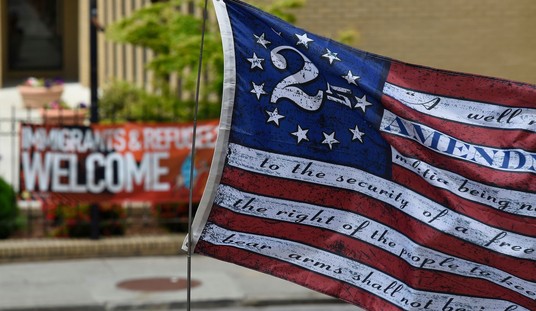There are many outraged people complaining that Tulsa Police Department officer Betty Shelby “murdered” Terence Crutcher for refusing to follow lawful police commands, returning to his vehicle, and allegedly lowering his hands to reach inside it.
They cannot fathom why an officer would feel threatened by a non-compliant suspect who returned to his or her vehicle and reaches inside.
That probably because they are probably unaware of one of the most infamous police shootings death of the past 20 years, where a Georgia Sheriff’s deputy gave a suspect pulled over for a simple speeding ticket every opportunity to surrender peacefully… too many opportunities, in fact.
Watch, and learn.
Chilling, wasn’t it?
Wikipedia does a decent job of explaining the stop and the aftermath:
On Monday, January 12, 1998, near the end of his shift, Deputy Kyle Dinkheller of the Laurens County Sheriff’s Office (LCSO) in the U.S. state of Georgia, pulled over motorist Andrew Howard Brannan, for speeding. A verbal confrontation escalated to a shootout resulting in Brannan murdering the Deputy. Dinkheller’s murder continues to get national attention (e.g., training in police academies) because the stop and shootout were captured on a personal video recorder Deputy Dinkheller had placed on his patrol car dashboard and activated when he stopped Brannan.
In the shootout Dinkheller was armed with his semi-automatic service handgun, Brannan had an M1 Carbine rifle. Dinkheller shot and wounded Brannan. Despite this, Brannan fired the rifle, reloaded it, fired a lethal shot into Dinkheller’s eye, and fled the scene in his Toyota truck. The next morning police found Brannan still in Laurens County, Georgia, hiding in a sleeping bag beneath a camouflage tarp. Police arrested Brannan for the murder of Deputy Kyle Dinkheller.
Brannan pleaded not guilty by reason of insanity, claiming in part that he suffered from posttraumatic stress disorder (PTSD) stemming from his military service as a soldier in the Vietnam War. Because Deputy Dinkheller’s video recorded most of Brannan’s actions, the jury found he murdered Dinkheller in a premeditated, torturous, and cruel manner.[1] Two years following the murder, on January 28, 2000, the jury found Brannan guilty of murder. On January 30, 2000, Brannan was sentenced to death. Nearly fifteen years later, on January 13, 2015, the State of Georgia executed Brannan by lethal injection.[2]
The shrieking, pleading death of Deputy Kyle Dinkheller is studied by law enforcement academies around the nation to this day as an example of how to do nearly everything wrong during a traffic stop and get yourself killed.
Tulsa’s police academy, like so many others, either uses the Dinkheller dashcam footage of his murder as a training aide, or similar films too graphic for public release that remain as “official use only” training aides.
When Terence Crutcher returned to his vehicle against the lawful commands of police, he put his life, the lives of officers, and everyone else at risk.
If you refuse to follow lawful commands just because you don’t feel like it and put officers in a situation where they have a reason to believe that you are reaching for a weapon or otherwise constituting a deadly force threat, you run the risk of being shot as Terence Crutcher was. Officers cannot determine if a suspect is armed or not until after the fact, and are authorized to use deadly force based on your actions, not on necessarily seeing a weapon.








Join the conversation as a VIP Member